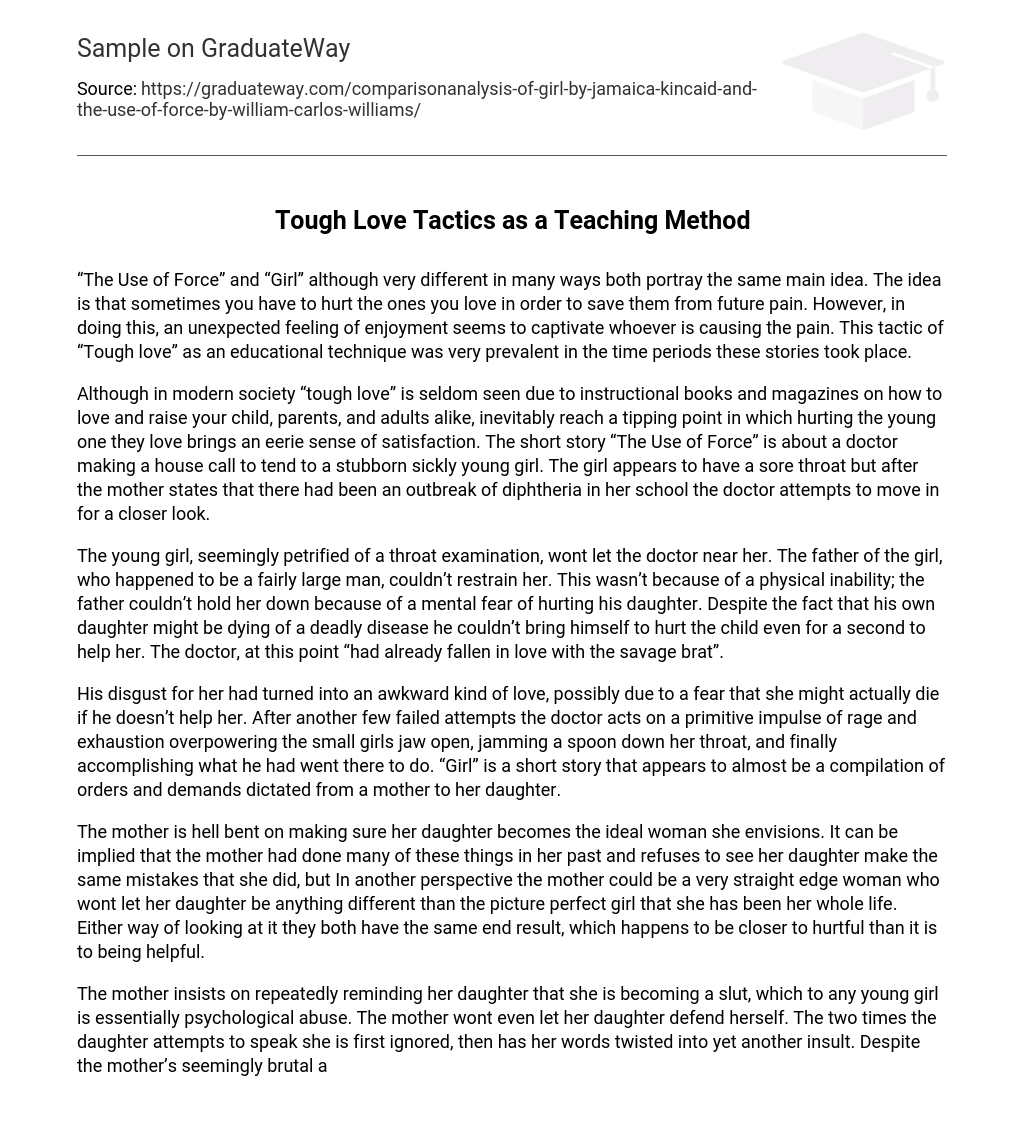“The Use of Force” and “Girl” although very different in many ways both portray the same main idea. The idea is that sometimes you have to hurt the ones you love in order to save them from future pain. However, in doing this, an unexpected feeling of enjoyment seems to captivate whoever is causing the pain. This tactic of “Tough love” as an educational technique was very prevalent in the time periods these stories took place.
Although in modern society “tough love” is seldom seen due to instructional books and magazines on how to love and raise your child, parents, and adults alike, inevitably reach a tipping point in which hurting the young one they love brings an eerie sense of satisfaction. The short story “The Use of Force” is about a doctor making a house call to tend to a stubborn sickly young girl. The girl appears to have a sore throat but after the mother states that there had been an outbreak of diphtheria in her school the doctor attempts to move in for a closer look.
The young girl, seemingly petrified of a throat examination, wont let the doctor near her. The father of the girl, who happened to be a fairly large man, couldn’t restrain her. This wasn’t because of a physical inability; the father couldn’t hold her down because of a mental fear of hurting his daughter. Despite the fact that his own daughter might be dying of a deadly disease he couldn’t bring himself to hurt the child even for a second to help her. The doctor, at this point “had already fallen in love with the savage brat”.
His disgust for her had turned into an awkward kind of love, possibly due to a fear that she might actually die if he doesn’t help her. After another few failed attempts the doctor acts on a primitive impulse of rage and exhaustion overpowering the small girls jaw open, jamming a spoon down her throat, and finally accomplishing what he had went there to do. “Girl” is a short story that appears to almost be a compilation of orders and demands dictated from a mother to her daughter.
The mother is hell bent on making sure her daughter becomes the ideal woman she envisions. It can be implied that the mother had done many of these things in her past and refuses to see her daughter make the same mistakes that she did, but In another perspective the mother could be a very straight edge woman who wont let her daughter be anything different than the picture perfect girl that she has been her whole life. Either way of looking at it they both have the same end result, which happens to be closer to hurtful than it is to being helpful.
The mother insists on repeatedly reminding her daughter that she is becoming a slut, which to any young girl is essentially psychological abuse. The mother wont even let her daughter defend herself. The two times the daughter attempts to speak she is first ignored, then has her words twisted into yet another insult. Despite the mother’s seemingly brutal attack, she does have good intentions. Although this technique may not be very “orthodox” she is trying to help her daughter.
Whether the pain is a little subtler like in “The Use of Force”, or a little more blatant like in “Girl” they both are given from adults to children, they both have good intentions, and they both bring a sick satisfaction to the adult. One cause was a matter of life and death, the other, arguably completely unnecessary, but the theory that hurting the one you love can help them in the future was clearly displayed. Proving that this theory is true however, is left up to personal opinion.





